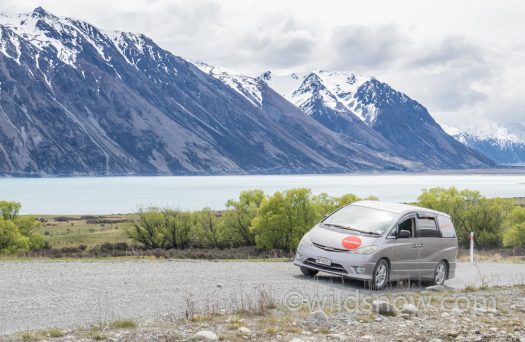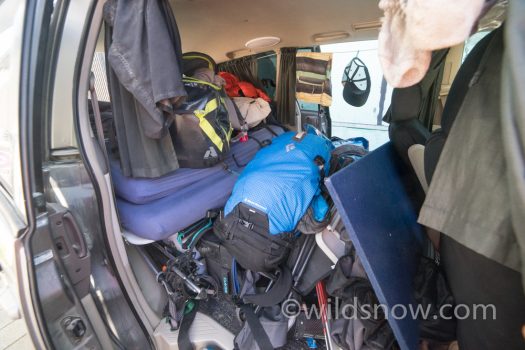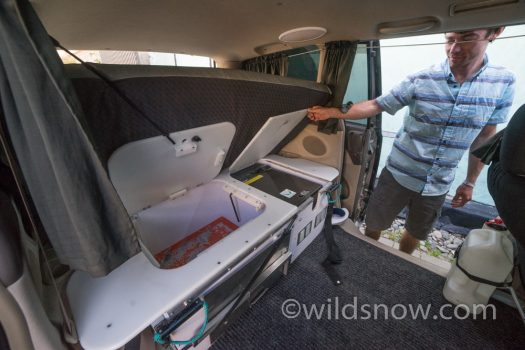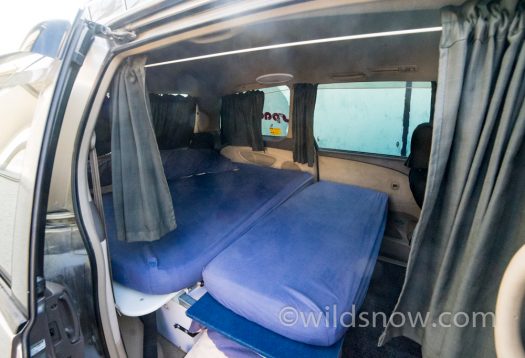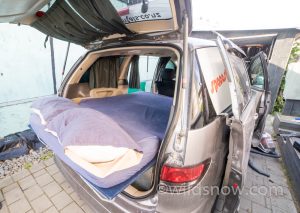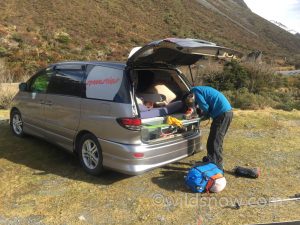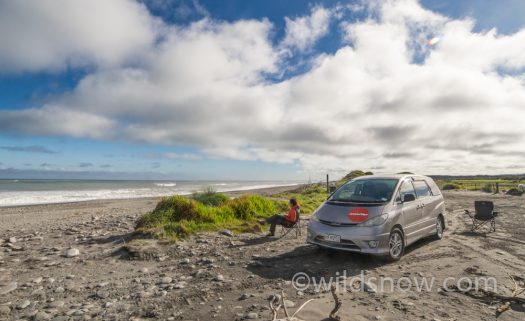New Zealand is a sparsely populated, incredibly beautiful country — perfect for road tripping. Some days it seems every 3rd car is some sort of “campervan,” most often a rental. Having the ability to sleep in your vehicle opens up a lot of areas to stay. Also, the savings of no hotels or hostels every night well outweighs the extra cost of a caravan vs a car.
When planning our little trip to New Zealand, I deliberated. We had the option of renting a car, a small non self-contained campervan, a larger, self-contained campervan, or even buying something and reselling it at the end of the trip.
We decided to go for one of the smaller campervans available, a Beta 2s from Spaceship campervans.
The rules and regulations regarding camping and campervans in NZ are unique, and I still don’t entirely understand them. But overall, we had a good trip and our spaceship was an well-tuned transportation device.
There are various camping classifications in New Zealand. “Freedom camping” is the NZ term for what we in the States would simply call “camping,” meaning camping anywhere outside of an established campsite. To legally freedom camp, you need to have a camper that has holding tanks for grey and black waste: certified as “self contained.” Moreover, even if you do have a self contained vehicle, you’ll still find plenty of areas where freedom camping isn’t allowed.
If you have a camper van without waste facilities, or simply a car and a tent, you have to camp in an established campsite that has a toilet. Luckily, you’ll have your pick of hundreds of campsites. Some are free, and others range in price from $8-$20 NZD a person. (Apps are available that show where campsites are, and which areas allow freedom camping).
The Kiwi system is a bit restrictive, and I’m not sure it would work or be accepted in places like the western US. However, with the concentration of tourists and other campers in NZ, it makes sense and works well.
Our Spaceship campervan was a Toyota Estima minivan, similar to a Toyota Sienna in the U.S. Spaceship has a variety of mini-van based campervans for rent. Their inexpensive models are based on the Toyota Emina (Previa in the US), and simply have a bed platform. They also have more deluxe models than ours with more amenities. I thought the mid-range option would be ideal. The fact that it has a fridge and extra battery turned out to be super helpful.
The Beta2s has been modified extensively for camping. All seats but the driver and passenger seats have been removed, and a bed platform has been built in the back. The bed platform is made of thick plastic board, with a number of different chambers accessible from hatches on the top surface. One contains a small electric fridge while others are for storage. The bed can be either configured to be entirely within the vehicle, or stick out the back door, to give a bit of extra room inside.
When traveling we folded the bed to create more interior space. A number of accessories come with the van. In the rear, each window has curtains. For cooking there are two small propane camp stoves, and a large assortment of pots, pans and utensils. A small table attaches to the side of the van. The van also comes with a large folding table, folding chairs and two awnings that attach to the exterior via suction cups.
We began our trip with concerns about the tiny spaceship meeting our needs. Much to our delight, the van ended up doing surprisingly well. I’m always on a bit of a budget, so it was nice to keep the cost down compared to other options. Also, I hadn’t really realized how expensive gas is in NZ. Although the Toyota wasn’t a gas sipper, it was certainly better than a large camper. As far as driving goes, we essentially had a large car. In terms of cargo capacity, this being a ski trip we had just about as much gear as two people could bring to another country. We were able to fit everything into the van, with a bit of gear shuffling required when we wanted to set the bed up.
The van had a fridge and an extra battery — excellent. We bought a bunch of food at the “pack and save” at the start of the trip, and bought nearly nothing more. Having the little fridge was key to helping out food last the entire trip.
The bed and other “built out” camping features of the van worked well. The bed platform is a thick plastic sheet rather than plywood, with some metal bits as well. The structure seemed strong. Under-bed storage was overall adequate for all our food, cooking gear, and a bit of other junk underneath the bed. Everything else went in our duffels, which stowed behind the front seats. The only thing that didn’t store well was our skis, which we normally put on top of the bed, or diagonally on the floor behind the seats. Overall impression: compared to some minivan camper conversions I’ve seen in the U.S., the Spaceship folks did a great job.
We had the ability to set up the bed to sleep fully inside the camper. We ended up doing that most of the time, sometimes because of wind, and sometimes to escape from the deadly NZ sand fleas.
Our van also had a few downsides, mostly relating to the size of the camper (admittedly, due to our choice in size of vehicle). It certainly would have been nice to have a bit more space for our gear inside. In order to sleep, we had to move two unwieldy duffle bags up to the front seats. Also, even without our ski gear, there isn’t much space for cooking or hanging out inside the camper. Since our trip was during spring, we didn’t have much cold or wet weather. We cooked and hung out outside quite a bit.
Since our camper was a bit space limited, we were disappointed when we unpacked for the first night and found we had quite a few things that were unnecessary and took up valuable space. For one, we had sheets and a comforter. Not needed since we had sleeping bags. A large assortment of cooking gear and utensils were included with the van. Useful and appreciated if you travel in convoy with friends in another vehicle (join for dinner?), but not needed by us. Lesson: If you rent a van, go through the included gear and make sure you have everything you need, and not too much extra.
This was my first time spending an extended period of time in a campervan, and the first time I’ve ever been on a trip where we rented a car for the duration of the trip. Overall I’d do it basically the same way again.
Sidebar: An inflatable roof rack could perhaps be mandatory for any trip that involves skis and van rental. Our friend that we skied with in Greece a few years ago had one on his rental car, and ever since then I’ve thought it was a smart idea. They can be found online for $100-$200, and simply inflate and then strap to the roof of any car. Once you have the rack, it’s easy enough to strap the skis to it. The rack packs up small enough that it would be easy to buy it in the states or online before the trip, and bring it in the baggage. If we didn’t have our skis stored inside the campervan, it would have opened up quite a bit of space inside, and made it much less of a hassle.
Louie Dawson earned his Bachelor Degree in Industrial Design from Western Washington University in 2014. When he’s not skiing Mount Baker or somewhere equally as snowy, he’s thinking about new products to make ski mountaineering more fun and safe.

